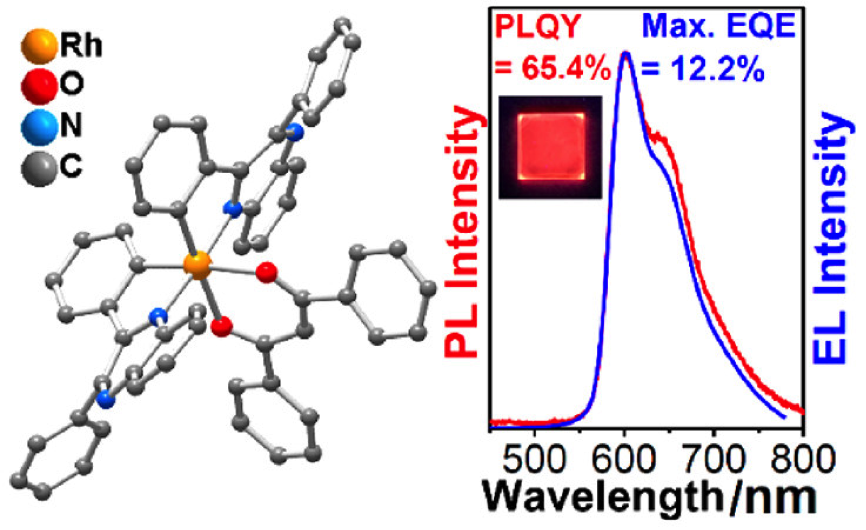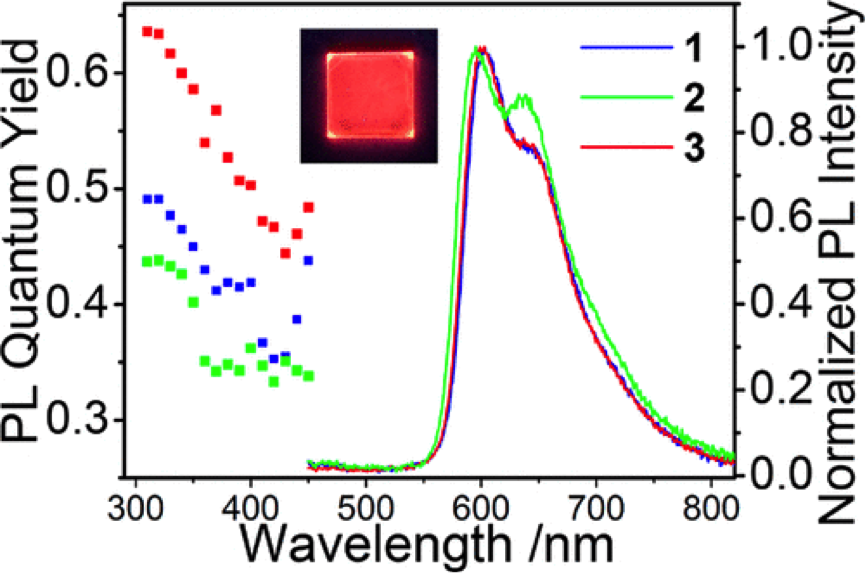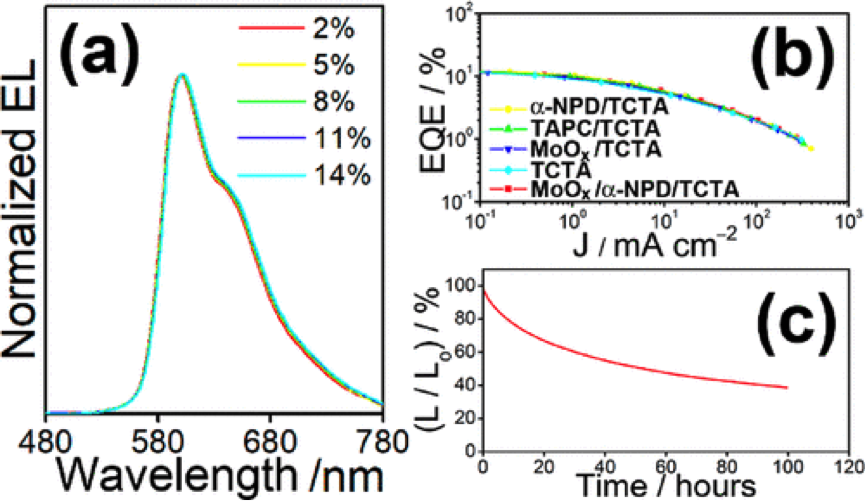Organic LEDs brighten future prospects under SUSTech research
2019-10-07
Excited state properties of octahedral d6 transition metal complexes, including ruthenium(II), rhenium(I), osmium(II), iridium(III) and rhodium(III), have aroused tremendous interests due to their attractive photophysical and photochemical behaviors. From the last two decades, the establishment of the predominant role of luminescent cyclometalated iridium(III) system as photo-functional materials has stemmed from their overwhelming properties for the potential biological and energy related applications. Since the pioneering work of Thompson, Forrest and coworkers in employing cyclometalated iridium(III) complexes first reported by Watts as phosphorescent emitters in organic light-emitting devices (OLEDs), promising applications have been realized as demonstrated by their rapid adoption in smartphones and displays everywhere.
Associate Professor Keith Man-Chung Wong of the Department of Chemistry at Southern University of Science and Technology led his research team to successfully synthesize a series of high-intensity rhodium(III) complexes and applying them to OLEDs for the first time. The results of that research were published in world-renowned chemistry publication, Journal of the American Chemical Society (J. Am. Chem. Soc., IF = 14.695), with the title of “Ligand Mediated Luminescence Enhancement in Cyclometalated Rhodium(III) Complexes and Their Applications in Efficient Organic Light-Emitting Devices.”
Compared with traditional lighting and display technologies, OLEDs are brighter while using less power. They also work well in a wide range of viewing angles, contrasts, colors and operational temperatures. There have been significant improvements in a wide range of performance indicators over the last thirty years. Being the most important components in OLEDs, there has been a rapid surge of interest in the studies of phosphorescent emitters with heavy metal centers because of their capability to achieve 100% internal quantum efficiency. However, the commonly used phosphorescent emitters, including iridium(III) and platinum(II) transition metal complexes, are well protected by a large number of patents

Rhodium(III) and iridium(III) are considered as very close congeners sharing similar synthetic methodology, structural characteristics, and some physical and chemical properties. On the contrary, the luminescence studies of polypyridyl and cyclometalated rhodium(III) system have been much less explored, based on the fact that most of them are only luminescent at low temperature. The related photo-functional application of luminescent rhodium(III) system is also very rare. Although tremendous efforts have been put in to tackle the shortcomings of the luminescence performance of rhodium(III) system, the reported luminance still could not satisfactorily meet the requirement for OLED application.

Associate Professor Keith Man-Chung Wong’s research team has developed a series of luminescent cyclometalated rhodium(III) complexes and demonstrate a breakthrough as the first example of an efficient rhodium(III) emitter for OLED application. Through the judicious choice of a strong σ-donor cyclometalating ligand with lower-lying intraligand (IL) state, the enhanced luminescence properties of rhodium(III) system from the integration of two strategies, i.e. raising d-d excited state and introduction of lower-lying emissive IL excited state, have been anticipated. The neutral formal charge, high thermal stability and luminance of over 65% in solid-state thin films render these complexes possible for device fabrication by vapor deposition or solution processing technique.

It is noteworthy that good device performance, including external quantum efficiencies (EQEs) up to 12.2% and fairly respectable operational half-lifetime of over 3,000 hours at 100 cd m–2 in the optimized OLEDs, have been achieved from this rhodium(III) system. The present study of rhodium(III) complexes with improved luminescence properties represents another viable emissive alternative of 5d6 iridium(III) system. This project has applied for related patents in the hope of obtaining independent intellectual property rights. The research team will attempt to use molecular design strategy to tune the luminescent color and further improve device performance.
The research works, such as molecular design, synthesis and photophysical measurements, were mainly accomplished by research assistant and first author Wei Fangfang. SUSTech is the first affiliation, and Associate Professor Keith Man-Chung Wong is the correspondence author.
The OLEDs in this work have been fabricated with the help of the Institute of Molecular Functioning of the University of Hong Kong and Dr. Mei-Yee Chan from the Department of Chemistry of the University of Hong Kong. At the same time, the development of this research has been funded by the start-up funds of the Southern University of Science and Technology, the National Youth Thousands Project, the National Natural Science Foundation and the Shenzhen Science and Technology Commission.
Link to the paper: https://pubs.acs.org/doi/10.1021/jacs.9b06308




